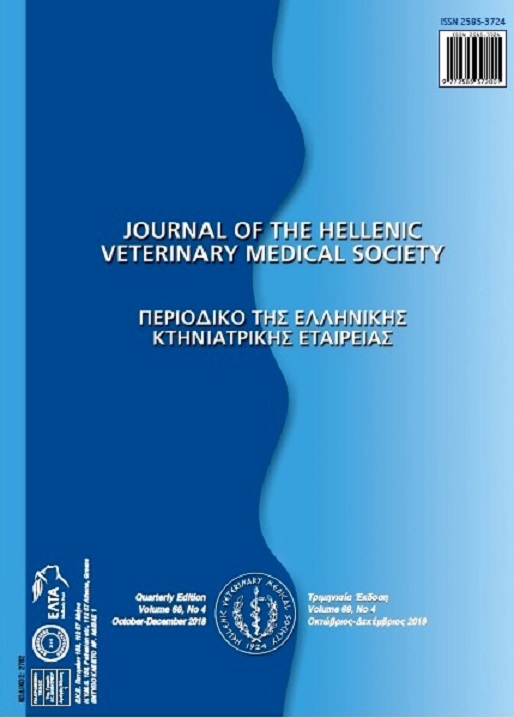The effect of intrastromal PRP and oral doxycycline in corneal wound healing after alkali burn
Аннотация
Ocular chemical burns are among the most critical and true ocular emergencies in dogs and cats, with destructive consequences on the ocular surface and intraocular tissues. Platelet alpha granules are an important reservoir of growth factors that can stimulate chemotaxis of inflammatory cells, mitosis, migration and differentiation of cells. On the other hand, tetracyclines and their derivatives exhibit non-antimicrobial properties, such as affecting inflammation, immunomodulation, cell proliferation and angiogenesis. The objective of this study is to investigate the effect of intrastromal platelet rich plasma (PRP) in combination with oral doxycycline in the healing process of the cornea. Thirty six New Zealand rabbits were used in this experimental study. Alkali burns were created by applying a round filter paper soaked in NaOH. PRP was prepared by centrifugation of autologous blood. The rabbits were allocated to four groups (9 animals each). Group 1 served as the control group without any treatment. Group 2 received doxycycline (5mg/kg b.w.) orally once a day throughout the study. Group 3 received an intrastromal injection of PRP (0.5ml) in the cornea, and group 4 received intrastromal PRP combined with oral doxycycline. Treatments had varied levels of success, with PRP combined with oral doxycycline producing the best results regarding corneal healing. Animals in the control group had epithelial defects for the whole duration of the study, and 3 animals presented corneal perforation. Groups 3 and 4 had smaller mean defect area, compared to groups 1 and 2. On the 7th day, neovascularisation was lower in treatment groups compared to the control group. Groups 3 and 4 also had less corneal oedema compared to the control group on day 3 and 7. Group 4 exhibited the best wound healing, with less neovascularization and better collagen arrangement, as shown by the histopathological evaluation. To the authors’ knowledge this is the first experimental study that intrastromal PRP is combined with oral doxycycline for the management of corneal chemical burns. This combination is a simple, safe and economical therapeutic approach that promotes corneal healing.
Article Details
- Как цитировать
-
Charalambidou, G., Kofidou, E., Papaioannou, N., Karampatakis, V., & Komnenou, A. (2019). The effect of intrastromal PRP and oral doxycycline in corneal wound healing after alkali burn. Journal of the Hellenic Veterinary Medical Society, 69(4), 1213–1226. https://doi.org/10.12681/jhvms.16119
- Выпуск
- Том 69 № 4 (2018)
- Раздел
- Research Articles

Это произведение доступно по лицензии Creative Commons «Attribution-NonCommercial» («Атрибуция — Некоммерческое использование») 4.0 Всемирная.
Authors who publish with this journal agree to the following terms:
· Authors retain copyright and grant the journal right of first publication with the work simultaneously licensed under a Creative Commons Attribution Non-Commercial License that allows others to share the work with an acknowledgement of the work's authorship and initial publication in this journal.
· Authors are able to enter into separate, additional contractual arrangements for the non-exclusive distribution of the journal's published version of the work (e.g. post it to an institutional repository or publish it in a book), with an acknowledgement of its initial publication in this journal.
· Authors are permitted and encouraged to post their work online (preferably in institutional repositories or on their website) prior to and during the submission process, as it can lead to productive exchanges, as well as earlier and greater citation of published work.



